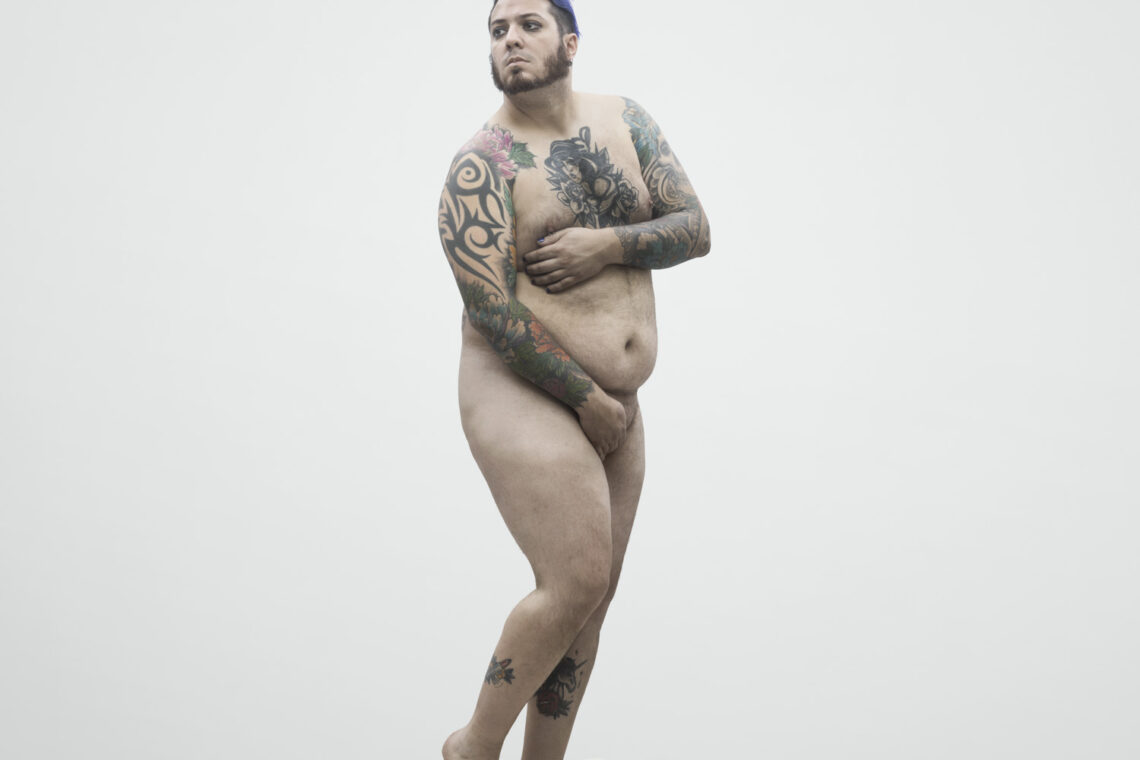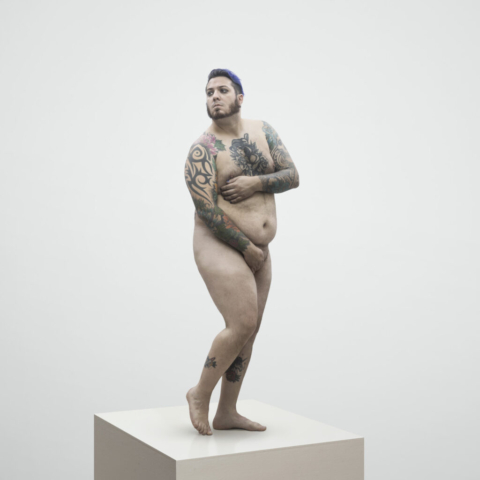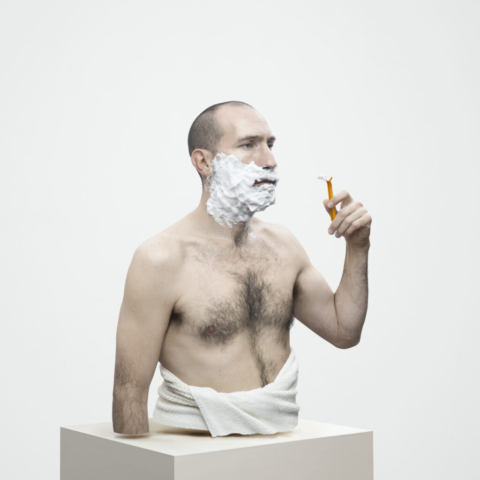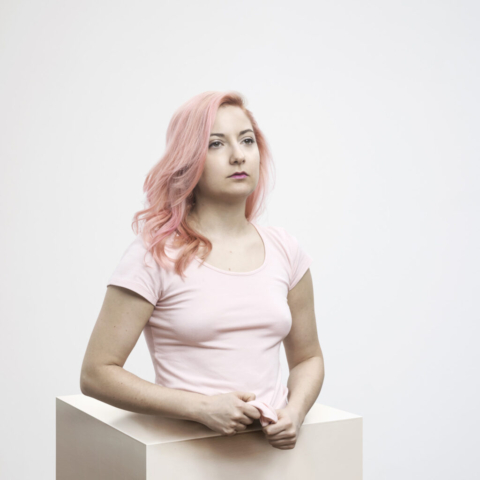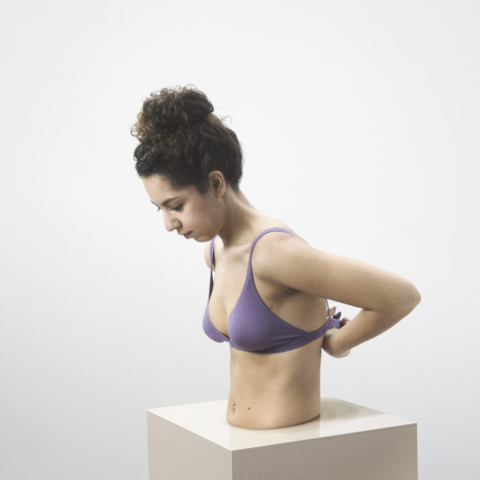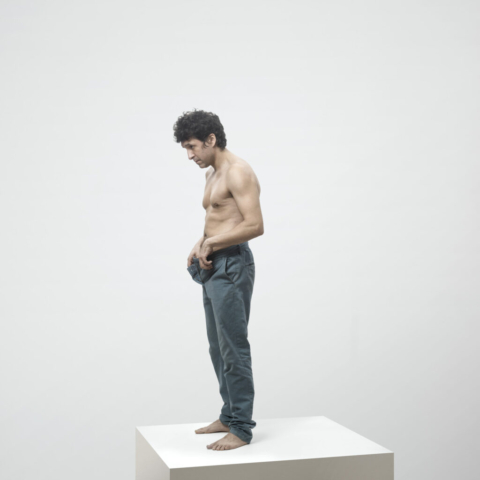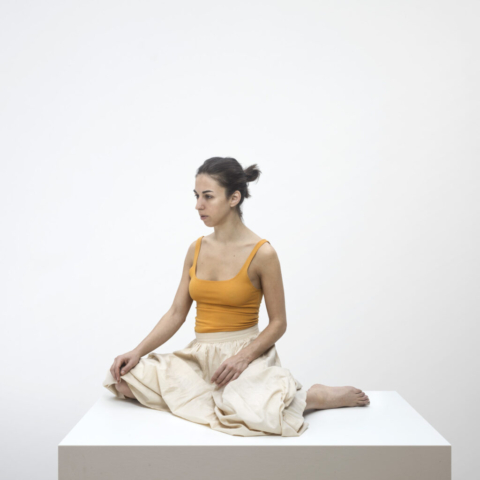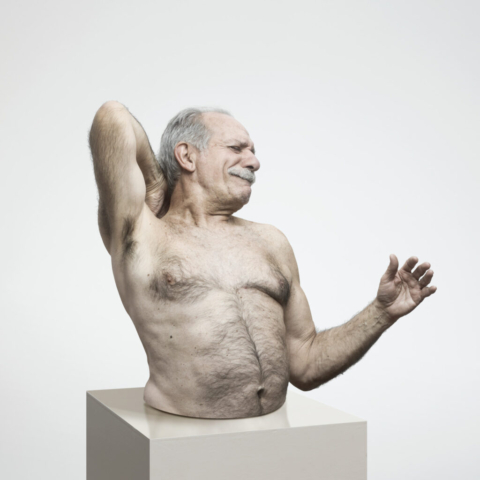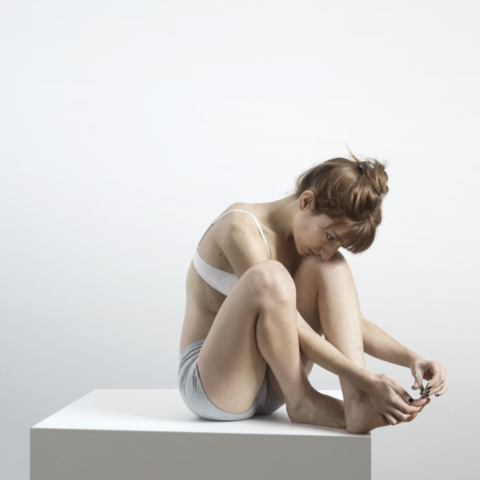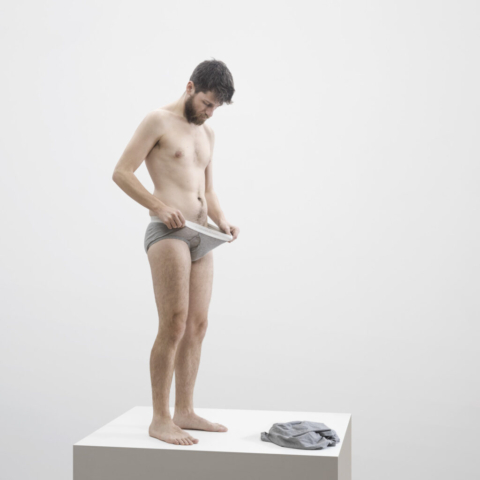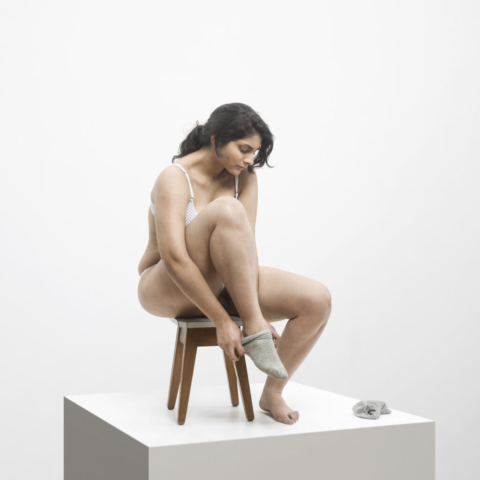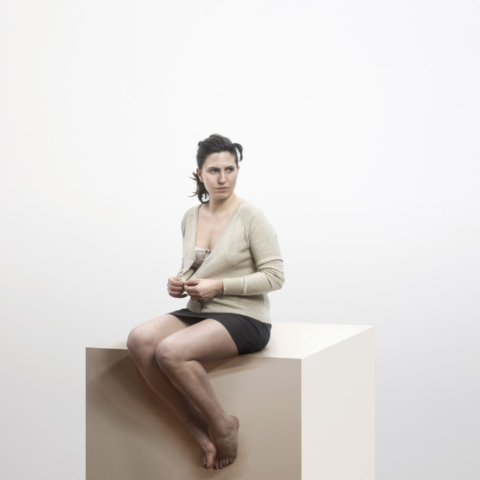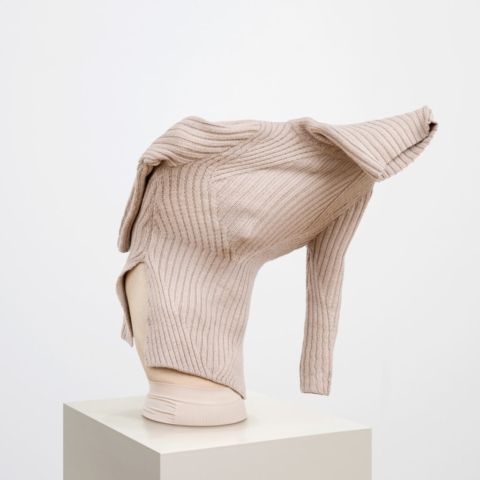Hyperrealist intimacy (or to contemplate automatic actions in the intimacy) That absent look, present in the movement of a sculpture when it is isolated and exposed as what it really is: details assembled in which we look for identification. The uncomfortable lack of context and the body which reveals folds, stains, textures that we generally try to hide and
erase, may these be what we really feel attracted to after all? Sculpture, as well as photography, invites us to pause. As if captured by an abyss, we are moved by the curiosity for someone else’s body, but mainly, by someone else’s intimacy.
A photography that pretends to be a sculpture invites us to pay attention to the detail, unable to spin around, we have to accept that the other sides are there as well. We are obliged to accept that the piece has been edited for us, making us focus on one part of it only. In each case, the study and the election of the instant of movement are present. Even inviting us to doubt its existence as a sculpture. Almost laughing at ourselves. We may recognize ourselves in them, either as a whole or in pieces, trying to discover ourselves. That absurd human intention to represent what is real, and to keep looking for the repetition of what is quotidian with the slightest detail, almost an exercise of personal analysis when we want to be in someone else’s skin.
/ Intimidad hiperrealista
Intimidad hiperrealista (o la contemplación de las acciones automáticas en la intimidad) Esa mirada ausente, presente en el movimiento de una escultura cuando se la aísla y se la expone como lo que realmente es, un conjunto de detalles en los que buscamos identificarnos. Será entonces la incomodidad de la ausencia de contexto y el cuerpo que va revelando pliegos, manchas, texturas que en general intentamos esconder o borrar, lo que a fin de cuenta nos atrae. La escultura al igual que la fotografía nos invita a una pausa. Como un abismo que nos atrapa, la curiosidad por el cuerpo ajeno y sobre todo la intimidad del otro nos moviliza. La fotografía que simula ser una escultura nos invita a detenernos en el detalle sin poder girar alrededor y aceptar que los otros lados están presentes. Nos obliga a aceptar que esa pieza está siendo editada para nosotros y quiere que nos concentremos solamente en una parte de ella. Que en cada caso esté presente el estudio y la elección del instante del movimiento. Invitando inclusive a dudar de su existencia como escultura. Casi riéndonos de
nosotros mismos. Quizás reconociéndonos en ellos entero o a pedazos para intentar descubrirnos. Esa intención absurda del ser humano en representar lo real, seguir buscando repetir lo cotidiano con el mejor de los detalles, casi un ejercicio de análisis personal cuando queremos entrar en la piel del otro.
